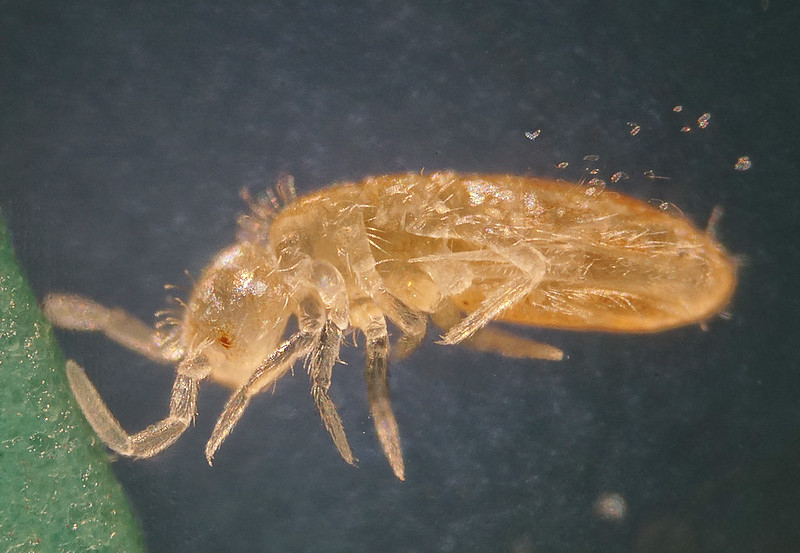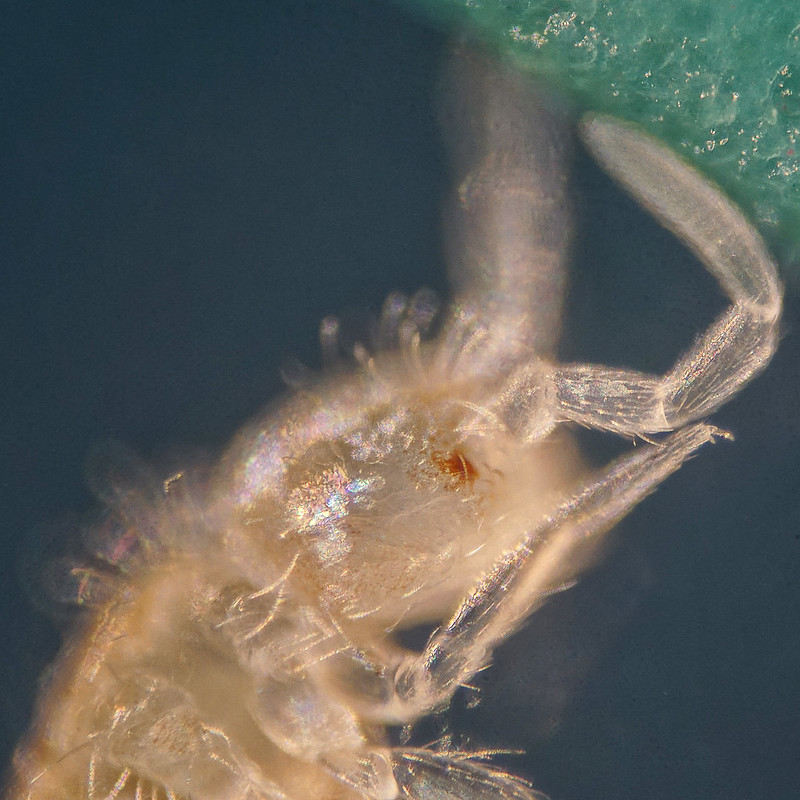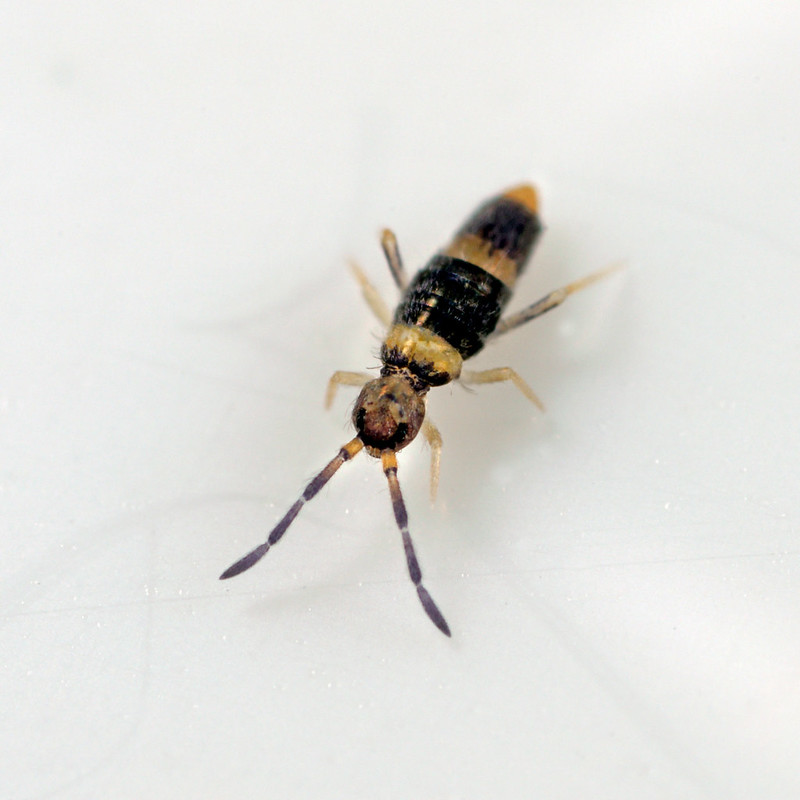This one turned into an eventful outing. Although we had had some showers, the ground was still dry so we went down to Croft Pasture to go hunting along the banks of the River Soar which runs through the water meadow. After a spot of cow dodging we started in one corner of the site, sweeping emergent vegetation (mostly sedges) right down to water level. This was very productive, yielding quite a lot of
Entomobrya nivalis and one
Dicyrtomina minuta:
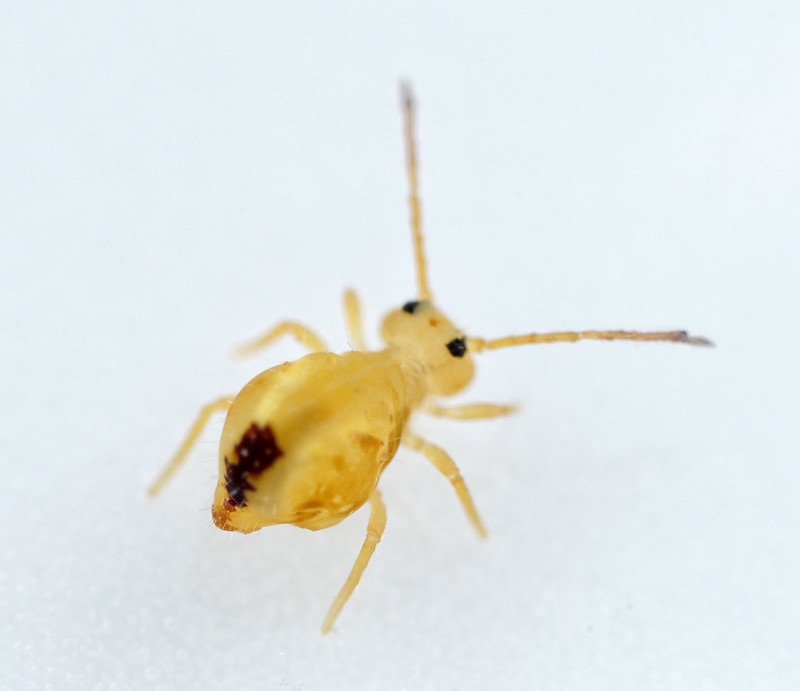
I also found a few of these, which I'm pretty sure is
Desoria violacea - violet iridescence and the long setae on abd5 are about two thirds as long as abd5:

I also found this specimen, which I'm not sure about. Has to be a juvenile
Desoria tigrina? No other
Desoria spp. it could be - not
trispinata or
violacea?:
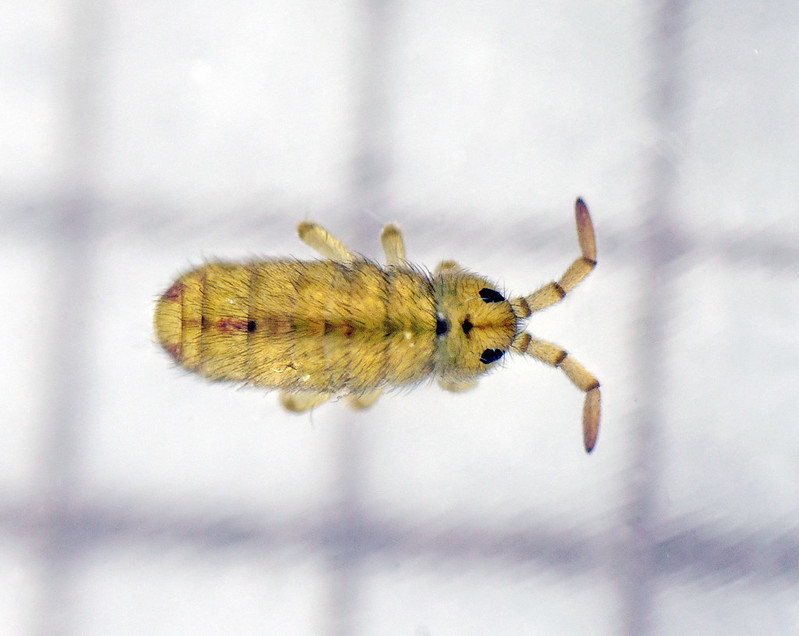
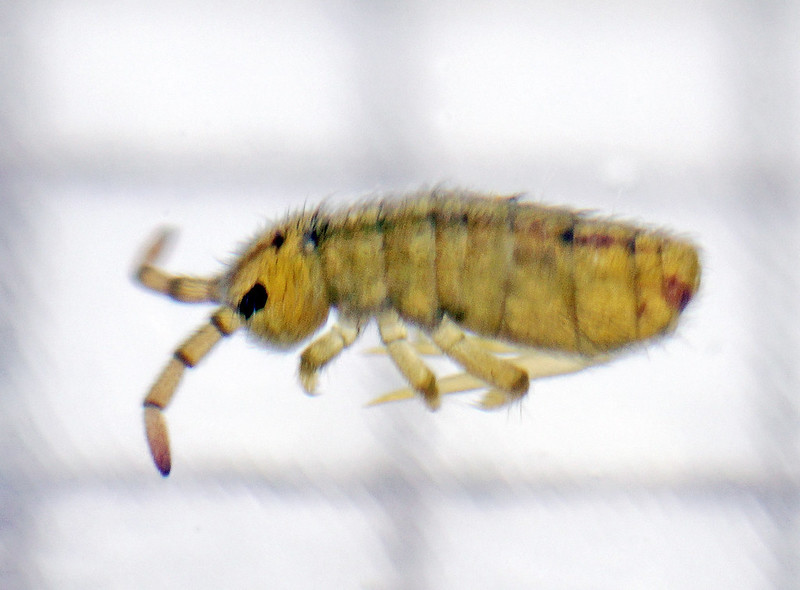
We then worked our way along the river to the other side of the site. Sweeping Water Forget-me-not (
Myosotis scorpioides) by the side of the channel I found a single
Sminthurus viridis. Although I have looked for this species previously whenever I have been around clover I had never found it so it was a bit of a surprise to find it here. I looked for more but could only find a single specimen. This is a large greenish or yellowish springtail reaching 3 mm in length with the fourth antennal segment (ant4) is divided into 18 subsegments:



Since we still had some time we then walked up the road to Croft Glebe. Sweeping vegetation did not produce any springtails but there were quite a lot of
Tomocerus minor in a decaying fallen tree trunk. After a short while, I realised the the hole in the end of the trunk I was poking around in was also home to a Hornet's nest, at which point I decided that this had been a good trip and in order to keep it that way, we beat a retreat.

